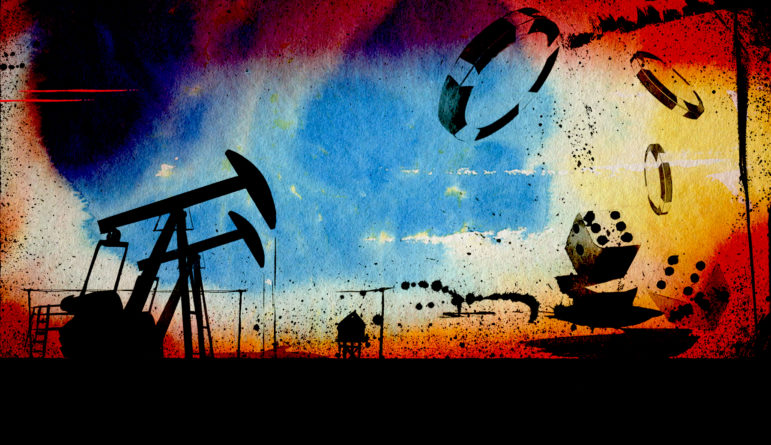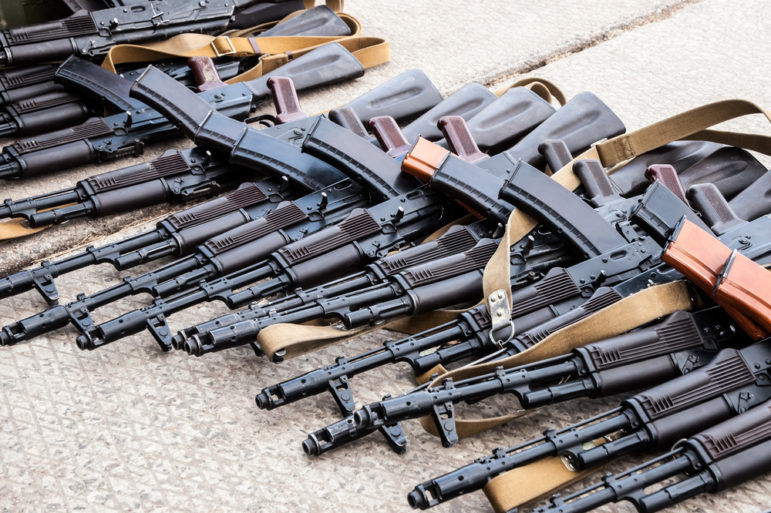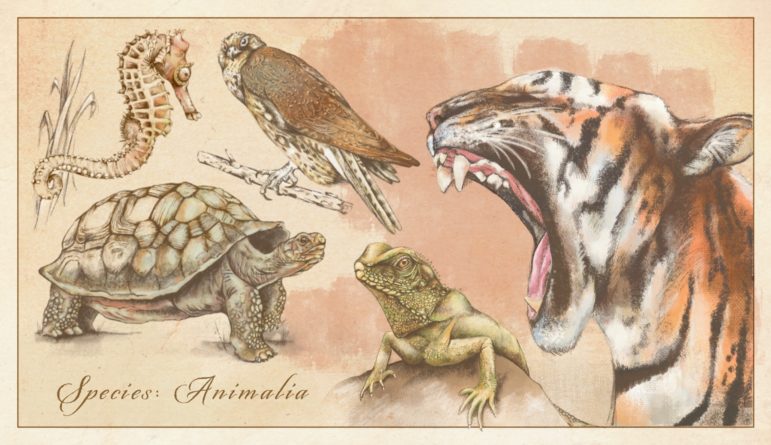
Organized Crime Reporting Tools & Tips
Latest Money Laundering Trends Journalists Should Watch For
A recent IRE conference panel focused on new money laundering strategies that make hiding illicit assets increasingly difficult to track.

A recent IRE conference panel focused on new money laundering strategies that make hiding illicit assets increasingly difficult to track.
Organized crime today is fluid, transnational, enterprising, and an estimated trillion-dollar industry. To talk about the state of 21st Century organized crime, we have an extraordinary panel of journalists with deep experience reporting on Mexico’s cartels, Italy’s mafias, and Asia’s Golden Triangle
Cryptocurrencies have taken the financial world by storm, yet few people truly understand them. Despite an industry raked by volatility and billion-dollar scandals, they have gained popularity not only among investors and anarchists, but also organized crime figures and cyber thieves looking to avoid the traditional financial system. Experts insist there are ways to investigate […]
Uyghur abuse and internment in China. Luxury properties in Austria owned by Belarus’s oil minister. Criminal exploitation of London’s company services industry. These investigations were all possible because of hacked data dumps. As a journalist, how do you negotiate with hackers or hacktivists? What questions do you ask? What are the ethical considerations? What are […]
In this global economy, it’s become easy to hide one’s assets overseas, whether you’re a Mexican crime boss or a Russian oligarch. Backgrounding an individual’s holdings is essential, but ferreting out front companies, tax dodges, and hidden assets can be a tough undertaking. Here are two of the best at doing this. ———————– The Global […]
With the end of the Cold War, intelligence agencies brainstormed about what the next great security threat would be. It turned out they didn’t have to look far: the global advent of kleptocracies and criminal states now threatens democracy and accountable government almost everywhere. Kleptocracies — government by theft — now dominate in much of […]
Organized crime is a global phenomenon. But Africa, with its deep-seated corruption and “resource curse,” is particularly hard hit.
Organized crime and corruption are widespread, deeply rooted and growing in Sub-Saharan Africa, a region with some of the world’s highest rates of poverty and inequality. Powerful criminal groups operate with the help of politicians, government officials and a “criminal services industry”, including corrupt banks. They make their money through the illegal narcotics trade, human […]
The Golden Triangle, where the borders of Myanmar, Thailand, and Laos intersect, is one of the world’s renowned centers of criminal activity. The region’s underworld economy turns over billions of dollars annually in narcotics production, human trafficking, wildlife smuggling, illegal mining, and more. Its cross-border illicit networks have global impact, working with criminal groups across […]
Tps and best practices for covering drug trafficking, money laundering, official corruption, other illicit activity in the region.

At a JournalismFund.eu webinar, journalists Annie Kelly and Ian Urbina spoke of their experiences documenting human trafficking around the world.
To share investigative best practices and other lessons learned from our most recent conference, GIJC21, we are releasing a series of videos from the event’s many seminars, panels, and workshops. The first installment in this series focuses on how investigative reporters can better dig into organized crime and corruption around the world.

In concert with GIJC21’s panel on the “New Organized Crime,” GIJN has released a comprehensive, multi-part reporting guide to investigating organized crime around the world, looking at nine key areas: criminal finance, narcotics, arms trade, environmental crime, forced disappearances, cybercrime, mafia states, human trafficking, and art and antiquities.
For details on this guide’s chapter authors, see the Acknowledgments page. Illustrations are by Ann Kiernan. Editing by Laura Dixon, Tanya Pampalone, and Reed Richardson. Andrea Arzaba was the project manager.
Cybercrime is any criminal activity perpetrated in a digital realm. While we often think of cybercrime as defined by “hacking,” there are many other types of crimes that are part of this world, and everything from trafficking in child pornography, to withdrawing illicit funds, to the theft of source code, falls into the category of “cyber” crimes.

National laws that govern arms dealing are uneven, contradictory, influenced by corrupted leadership, and rife with loopholes. Other barriers to exposing the weapons trade range from maritime and aviation secrecy concealing the transportation of arms; corporate entities that shield dealers and operators; the role of neighboring countries as conduits, and a barter system that allows one illicit commodity, such as ivory, to be exchanged for another.

GIJN’s forthcoming guide to investigating organized crime features a chapter on what we call mafia states – countries that essentially operate as a criminal cartel and run the affairs of state much as a crime syndicate runs rackets. To explore this topic, we asked GIJN’s executive director David Kaplan to interview Drew Sullivan, co-founder and editor of the Organized Crime and Corruption Reporting Project.

The illegal trafficking of wild animals and plants is damaging biodiversity worldwide and spreading diseases. It’s an international story, with great opportunities for investigations in virtually every country. GIJN’s new guide encourages deep reporting about the subject with tips and tools for covering a global trade.
This guide was written by Toby McIntosh, GIJN’s Resource Center senior advisor. Illustrations are by Marcelle Louw. Editing by Laura Dixon and Reed Richardson. The illegal trafficking of wild animals and plants is damaging biodiversity worldwide and spreading disease. It’s an international story, with opportunities for investigations in virtually every country. This GIJN guide aims […]
We’ve compiled a spreadsheet containing major reports, key groups, databases, and stories to help you investigative illegal wildlife trafficking. This table is a list of major reports, key groups, examples of investigative journalism, and relevant databases on illegal Wildlife Trafficking. The collection is part of GIJN’s Illegal Wildlife Trafficking guide, which can be found here. […]
GIJN invited experienced journalists and activists to answer one key question about reporting on illegal wildlife trafficking (IWT): What stories should investigative journalists interested in this subject concentrate on? Their reflective answers are based on years in the field. The experts are not of one voice. Some stress looking for more unusual stories: about the […]
The most widely quoted estimates for the financial size of illegal wildlife trafficking (IWT) are built on quicksand and are so old, vague, and poorly calculated that they should be avoided in your reporting, according to experts consulted by GIJN. Better to focus on the demonstrated negative impact of trafficking on plant and animal populations. […]
“Bushmeat in the city? I say ‘No!’” That’s the key message from a recent public awareness campaign to reduce demand for meat from wild animals. The video (in French) features women in an African marketplace. It was created by the Center for International Forestry Research, a nonprofit scientific organization, headquartered in Indonesia, with four offices in […]
Arrests for IWT rarely result in successful prosecutions and convictions. The penalties and prison sentences given are remarkably low. Only 11% of wildlife crimes were successfully prosecuted, according to a 2017 report by the Asia/Pacific Group on Money Laundering and the United Nations Office on Drugs and Crime. Of the cases examined for the report, […]
Supply chains connect wildlife suppliers to end users. However, there is too much focus on poaching and not enough on trafficking, according to Andrea Crosta, executive director of Earth League International, an NGO that investigates wildlife crime and runs WildLeaks. “We know what happens at poaching level and at the end of the supply change,” […]
Social media is now extensively used to facilitate illegal wildlife trafficking (IWT) and journalists can generate many kinds of stories by probing these online platforms. The prevalent role that social media plays in trafficking is well-documented by academics, NGO researchers, and journalists. Perhaps the best line of inquiry for reporters is to conduct narrow searches […]
The webs of trafficking are varied and complex, so many kinds of people are potentially involved, as protectors and perpetrators. Below are suggestions about who to interview and key factors to consider when getting started. Sadiq Naqvi, an independent investigative journalist in India who has written about rhino poaching, said: “It is very important to […]